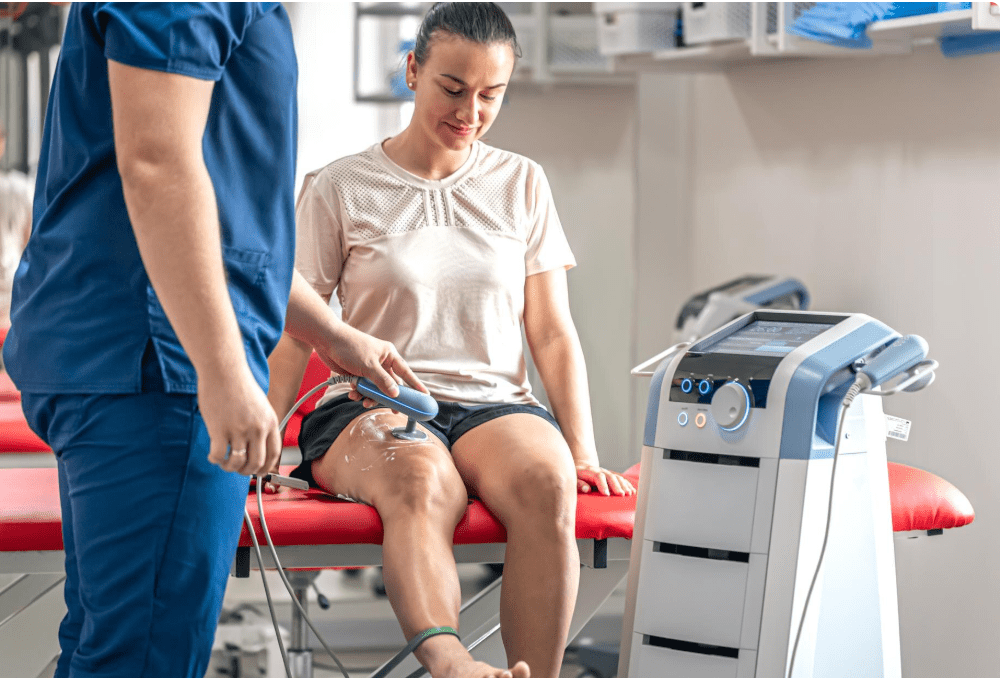The recovery process for patients navigating the critical days following knee surgery frequently depends on striking a precise balance between inflammation management and mobility. That experience has been dramatically changed by renting an ice machine, particularly one that combines intermittent compression and cryotherapy. These devices provide a non-invasive means of reducing swelling and managing pain without the need for excessive medication, which is especially advantageous for patients having knee replacements, ligament reconstructions, or patellar operations.

Many people used self-managed recovery methods at home during the pandemic as surgery wait times increased and post-op support became more demanding. During this time, the Cryopush gadget became a significantly better option than traditional ice packs. Even for older individuals or those recuperating alone, it was simple to use thanks to quite clear instructions. According to patient reports, the gadget permitted faster joint flexion during physical therapy sessions and greatly decreased inflammation by applying continuous cold through a wraparound cuff.
Ice Machine for Knee Surgery Rental – Key Information
| Item | Details |
|---|---|
| Type of Equipment | Cold Therapy Machine (Cryotherapy + Compression) |
| Primary Use | Post-operative knee recovery (arthroscopy, knee replacement, etc.) |
| Rental Duration | Minimum 1 week, extendable weekly or monthly |
| Delivery Locations | Spain and Portugal (personal delivery in Malaga, courier elsewhere) |
| Average Daily Cost | $25–$75 depending on features |
| Weekly Rental Cost | $100–$300 depending on model |
| Monthly Rental Cost | $250–$700+ depending on model |
| Key Benefits | Faster recovery, less medication, reduced inflammation, improved mobility |
| Payment Options | Cash, transfer, Bizum, card (card payment in Malaga only) |
| Reference |
Influencers recuperating from elective surgeries or sporting injuries have been posting more information about their post-operative routines on the internet in recent months. The usefulness of such rehabilitation techniques has been discreetly highlighted by athletes like Rafael Nadal and celebrities recuperating from dancing injuries. Their practices frequently involve aspects—controlled swelling, compression, and cold application—that are remarkably comparable to what these rental equipment provide, even though they do not specifically endorse cryotherapy machines.
Patients can get cutting-edge therapy without having to commit to a full device purchase by renting instead of buying. Businesses like Cryopush have made sure that even tiny communities obtain equipment within 24 hours by forming smart alliances with regional distributors. When recovery timelines are short and physiotherapy appointments rely on the patient’s ability to move efficiently, this type of logistical dependability is crucial.
Access to recovery methods for medium-income households may be influenced by affordability. The ability to pay with a card, cash, or Bizum offers flexible options, especially for people who are handling post-surgery bills. The rental service, which is surprisingly reasonably priced for what it provides, has become popular in areas like Malaga, where local delivery is done by hand, improving the quality of care.
The emergence of consumer-driven healthcare over the last ten years has encouraged more patients to take an active role in their own recovery. These ice machines are no longer exclusive to hospitals. Rather, they are a part of a larger trend where prevention and rehabilitation become domestic duties, much like wearable health technology. In this regard, having a device that is both extremely effective and versatile fits in well with the expanding field of at-home medical innovation.
Patient reliance on opioid-based medications has significantly declined after the introduction of express rental schemes. Testimonials frequently mention halving or more their analgesic usage. This change is societal in nature rather than merely medical. These devices provide an alternate route based on mechanical rather than chemical pain management, which is in line with growing concerns about prescription medication dependence, especially following major surgeries.
The cryotherapy rental trend offers a case study in market response for health tech firms in their early stages. Businesses are simplifying operations and freeing up human talent that would otherwise be buried in post-surgical support calls by paying attention to patient needs, such as mobility, pain management, and quick shipping. Additionally, these devices allow medical professionals to concentrate more on proactive rehabilitation as opposed to reactive symptom management.
The psychological aspect of orthopedic healing is just as significant. Autonomy is restored when one feels capable once again, whether it is getting out of bed pain-free, climbing stairs, or even walking without assistance. This happens more quickly than anticipated thanks to ice machines. Compression enhances circulation, which speeds up the evacuation of inflammatory waste from the joint, providing both mobility and pain relief.
In order to improve recuperation, many equipment rental providers now offer guided video sessions through strategic collaborations with rehab clinics. Despite not being physical therapy in the conventional sense, these digital touchpoints inspire patients and give them the confidence they need to finish activities. Creating a comprehensive healing environment is more important than focusing only on the machine.
Tech-forward firms are incorporating data-tracking into their future models by working with medical professionals. Although Cryopush is now set up manually, future iterations might incorporate app-based temperature history and usage hour recording. Telemedicine professionals have long argued for remote progress monitoring, and this amount of detail would be quite novel in that regard.
